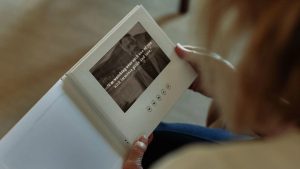
Breaking Away from Chronology to Find Deeper Truth
When telling your own story, it might feel natural to start at the beginning and move forward in a straight line. But personal experiences rarely unfold that neatly. Memory jumps. Emotions return out of order. And sometimes, the most powerful way to tell a story is to follow feeling instead of time. Exploring nonlinear storytelling for personal narratives opens the door to this more intuitive, emotionally honest form of expression.
Nonlinear storytelling allows writers to organize personal narratives based on meaning, not sequence. It makes room for reflection, flashbacks, or even parallel experiences across years. This narrative structure helps highlight emotional beats that might be lost in a traditional timeline.
Choosing to tell a story out of order can reveal new patterns. A breakup and a childhood memory might suddenly share the same emotional core. A recent decision might connect to a long-forgotten conversation. These threads create a richer, more layered sense of self.
Following Emotion Instead of Time
One reason exploring nonlinear storytelling for personal narratives works so well in personal writing is that people remember based on how something felt—not when it happened. A joyful moment in your twenties might remind you of a small win in elementary school. A recent grief might echo an old loss.
Structuring a story around emotions allows for stronger connection. Instead of walking readers through years, you bring them into moments that matter. This lets you group memories by theme—like hope, regret, or belonging—rather than date.
Writers often find more freedom this way. It becomes easier to share vulnerable or complex parts of life when you can shape the story around impact. The heart of the experience comes first, and the timeline fills in later.
Using Flashbacks to Reveal Change
Flashbacks are one of the most familiar tools in nonlinear storytelling. When used well, they show how past and present talk to each other. They offer contrast, reflection, or insight that helps the reader understand the narrator’s growth.
A story might start with a moment of decision, then pull back to show how that decision came to be. The past gives context without slowing down the emotional pace. Readers don’t need every detail—they just need the right ones to feel the shift.
This kind of movement also builds tension. Readers begin to wonder what came before or what’s about to unfold. It keeps attention sharp and creates space for surprise. In personal narratives, it makes the journey feel more honest and less staged.
Telling Stories in Vignettes
Vignettes—short scenes that focus on a single moment—are another tool for nonlinear storytelling. Each one stands on its own, but together, they build a full picture. This approach lets you zoom in on small details without needing to explain everything right away.
Vignettes work well for stories with emotional weight. A quiet morning, a long walk, or a simple conversation can all hold meaning. Placing them side by side, even from different years, shows patterns and echoes that might not be visible in a linear format.
This format also makes writing less overwhelming. You don’t need to tell everything at once. Just one scene at a time. The connections will come naturally, both for you and for the reader.
Letting Memory Guide the Story Structure
When writing from real life, memory often comes in pieces. Nonlinear storytelling embraces that. Instead of forcing your thoughts into order, it lets you follow where your mind naturally leads. This approach can feel more true to life.
Writers might start with a moment that won’t leave them alone. From there, they move backward, sideways, or forward as other memories surface. The structure forms not from a calendar, but from connection—what relates, what contrasts, what feels linked.
This method is especially useful in stories about change, loss, or identity. It reflects how people think and feel in real time, revisiting the past while trying to make sense of the present.
Using Repetition to Build Meaning
In nonlinear narratives, repetition becomes a way to ground the story. A phrase, image, or event might show up more than once—but each time with a different layer of meaning. These echoes guide the reader and mark emotional turning points.
For example, a story might open and close with the same line. But by the end, that line hits differently. Maybe it carries peace instead of pain. Or clarity instead of confusion. That shift tells the story without needing explanation.
Repeating images or moments also gives structure to a nonlinear piece. It helps readers feel anchored, even as the timeline shifts. The pattern becomes part of the experience, offering rhythm and reflection at once.
Showing Growth Without Telling It
One of the strengths of nonlinear storytelling is how it shows change. By placing two scenes from different times side by side, you invite readers to see what’s shifted—without needing to say it out loud.
A conversation with a parent before and after a major life event. A return to the same place years later. These juxtapositions tell the reader something has changed in the narrator’s mind, heart, or worldview. And the reader feels it for themselves.
This makes growth feel earned, not explained. It trusts the audience to understand the emotional journey. In personal storytelling, that trust builds intimacy and authenticity.
Playing With Time to Reveal Patterns
Some personal narratives don’t follow one story—they follow many. Nonlinear storytelling lets you show how different life events connect. A decision made in adulthood might reflect a childhood instinct. A long friendship might be told in scenes from many years.
Jumping between timelines can show how certain themes return. It helps readers see that growth isn’t always forward—it loops, circles, and restarts. That movement gives the story a rhythm that feels natural and personal.
These shifts also allow contrast. Moments of joy and pain can sit side by side. The effect is often more powerful than if they were pages apart. Readers feel the weight of time and the strength of memory in one breath.
Inviting the Reader to Participate
Exploring nonlinear storytelling for personal narratives doesn’t give readers all the answers at once. Instead, it invites them to follow clues, build connections, and find their own meaning. That sense of participation makes the experience more personal.
When a story jumps in time, readers naturally ask why. Why this moment now? Why this memory after that one? These questions pull them deeper into the experience. They engage not just with the events, but with how those events are remembered and felt.
This approach turns the story into a conversation. It offers space for reflection, surprise, and emotion. And in personal writing, those are the things that stay with the reader long after the last line.

